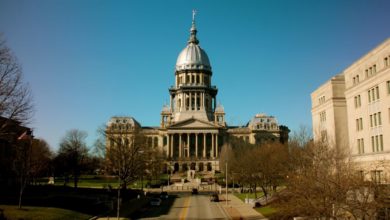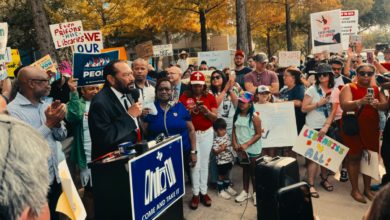When the world’s capitalist elites met in Davos, Switzerland, for this year’s World Economic Forum, they were quite concerned with what they called a major “social and economic time-bomb.” The time-bomb was youth unemployment—if it exploded, it threatened not just “crisis” but “disaster.”
These elites understand the extent to which their capitalist system is not meeting the needs of working people around the world, and young people in particular. This reality is like a powder keg, creating the basis for new political movements and eruptions.
According to the International Labor Organization 75 million, or 12 percent, of the world’s youth are looking for work. They call this figure conservative, given that “many young people have stopped looking for work” and thus are often not counted in unemployment statistics.
Young people at the forefront of struggle
It comes as no surprise, then, that young people have appeared at the forefront of the waves of resistance that have already occurred around the world.
While the protests respond to different national issues, and individuals enter political life for distinct personal reasons, the prominence of young people at the forefront of these contemporary social explosions is not difficult to explain. The broad masses of young people are highly exploited workers and the unemployed poor, suffering directly from the global economic crisis. In addition, a key group fueling the revolutions in Egypt and Tunisia was referred to as “over-educated youth,” a term that reveals the anarchy and wastefulness of the capitalist economic system. The hoped-for careers of these young people have been derailed with no suitable alternatives in sight.
The last two years have produced new movements and struggles, some spontaneous and others prolonged, in Egypt, Spain, England, Chile, India, Nigeria, Mexico, Quebec, Puerto Rico, the United States and elsewhere.
This is not new. Young people have historically played a key role in rebellions and revolutions. For obvious reasons, youth have the most at stake in the future development of society. That is why revolutionary organizations such as the Party for Socialism and Liberation give a special emphasis on recruiting and developing leadership among young people.
In 1906, Lenin responded to a complaint from a fellow comrade about the predominance of youth in the revolutionary party: “We are a party of innovators, and it is always the youth that most eagerly follows the innovators. We are a party that is waging a self-sacrificing struggle against the old rottenness, and youth is always the first to undertake a self-sacrificing struggle.
“No, let us leave it to the Cadets [the liberal party] to collect the ‘tired’ old men of thirty, revolutionaries who have ‘grown wise.’ … We shall, always be a party of the youth of the advanced class!” (Readers over 30 years old need not despair: for some perspective, pre-revolutionary Russia’s life expectancy was under 40!)
Different classes of youth leadership
That young people predominate in movements for social change and revolution does not mean that youth and students are categories of the population disconnected from class society. Youth and students have different class backgrounds and class aspirations, while subscribing to political beliefs and parties that justify one form of class rule or another.
In Egypt, the youth in rebellion last year represented diverse political trends, which themselves represented different social classes and class trends. While they maintained unity in the struggle against the U.S.-backed dictator Hosni Mubarak, sharp political ruptures emerged as soon as he was overthrown. How far should the revolution go? What sort of society were they fighting for? Which class should rule?
Youth do not represent a distinct sector of society that can seize and hold power. The term “youth revolution,” which was used to describe Egypt, can thus confuse the fundamental issue of which class remains in power and how the economy is fundamentally organized. It often masks deeper political issues. This was also seen in last year’s reactionary Libyan counter-revolution, which the U.S. media frequently referred to as a “youth rebellion” in order to create sympathy for it.
The loose usage of “youth” also opens the door for anyone to adopt the mantle of “youth leader” and bend the category to their opportunistic advantage.
This is not just true with conservative “youth leaders” like Bristol Palin or Meghan McCain, but also with college student governments that often function as conveyor belts into the Democratic Party and liberal interest groups. Under the cover of “youth leadership,” they often peddle the same sorts of capitalist lies as their older counterparts, proposing moral uplift, minor reforms and tweaks of the system. Instead of real “youth empowerment,” which for the vast majority of youth would require putting workers and oppressed people in power—they give a young face to the same old establishment politics.
A revolutionary, anti-capitalist youth movement
The propagandists and policymakers for capitalism often mask the class basis of social problems—from alienation to crime to unemployment—by labeling them as “youth problems.” For many young people and their families, however, the conditions of the current crisis are nothing new, especially in the country’s ghettos, barrios, reservations and rural areas.
In fact, the sharp class division that characterizes U.S. society as a whole exists among young people as well. The vast majority of youth in the working class, coming from families with little to no property, sell their ability to work to survive, or find themselves shut out of the labor market altogether.
Because the media and the education system constantly focus on the relatively few examples of people who make millions and climb out of the working class, many young people are under the false impression that the country’s social classes are fluid. For the last two generations, this was reinforced by the fact that a college education typically guaranteed access to a “middle-class” job. All young people had to do was to get that college education, or so they were taught.
The recent economic catastrophe has closed off many of these opportunities. College students have found upon graduation that instead of landing a middle-class job with promise for advancement they are confronted with massive amounts of debt, few or no job opportunities, and a future that looks incredibly uncertain.
Students already have been pushed into struggle by this new reality. They have fought against tuition hikes and rate increases, and there is a growing movement for student debt relief.
The task of revolutionary socialist youth—like the many young members of the PSL—is to impart class-consciousness to these struggles and link them to the broad fights of poor and working people against cutbacks, national oppression and capitalism. While some look backward, seeking to preserve an education system that allows a select few to escape the conditions of poverty and low-wage work, socialists fight for a new type of society free of such ills.
What we aim to build is not simply a “youth movement,” but a movement of young revolutionaries. A movement that understands that what unites the broad masses of rebelling youth is not their age, but their position in society: the outcast, the downtrodden, the criminalized, the super-exploited wage slave. There are millions of young people staring into a future seemingly without hope, but today’s despair can become the fuel for tomorrow’s revolution.





